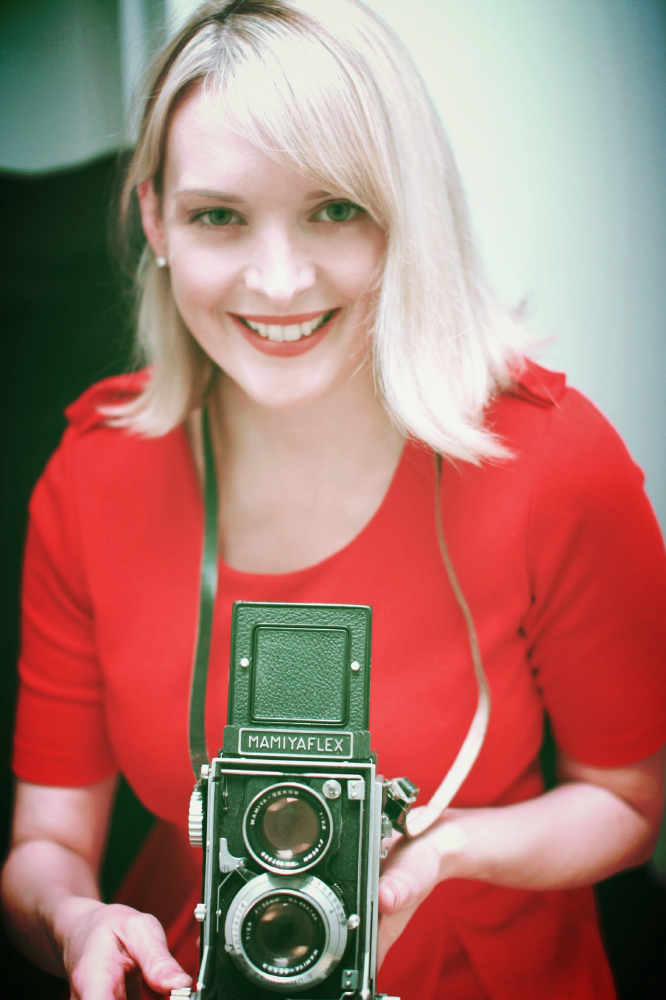
Kate Branch

When I tell people about my book, How to Look Good in Photos, the first reaction I hear is “I really want to know how to look good in photos, I’m going to read your book!” This is really exciting as it almost feels like I had to write my book to help body and face conscious people. Until now, people just assumed that posing was purely for celebrities and the rest of us just had to grin and bear it. But in a world where social media demands photos, taking a great selfie is as important to self-esteem as say, first impressions in a job interview.
What is your top tip for looking your best in photos?
I would have to go with my slim and streamlined pose. This is because most people don’t like their arms in a photo as they feel nervous so slap them at the sides of the body and this makes arms look twice the width. Also I’m a big believer in being proud of the body we have, whether you’re tall, short, cuddly or lean. Once you know how to stand correctly, regardless of your size, you’ll gain confidence. To pose using slim & streamlined here are the steps:
Turn your body at a 45-degree angle to the camera:
Option 1: Place your weight on your front foot, bending your back leg slightly.
Option 2: Place your weight on your back foot, and showcase your front foot.
Option 3: Distribute your weight evenly but make sure you are sideways.
Then make sure your arms are slightly away from your body and bend your elbows, so they appear as slim as possible.
Please tell us about the training your received from your father:
My father was a photographer for Ogilvy & Mather so his expertise was focused on the technical aspects behind the camera. He mainly photographed in the studio yet I’m the opposite. I gravitate towards natural light on every occasion. At weekends, while I was studying at university, dad would provide weekend tutorials so I learned about shutter speed, depth of field and dark rooms. This gave me a huge advantage from learning regularly with a hands on approach by my dad who was an expert in this field.
Why were you so interested in photography before even learning to drive a car?
I guess I was just born to capture an image! My mother says I was always a creatively curious child and she and dad encouraged me to nurture this talent. Originally I decided to study Psychology and Japanese at university but during my Gap year, I changed direction and enrolled in Art with a Photography Major. Because I was so focused and driven towards this degree, learning to drive a car literally took a back seat.
How important is it to have an interest in photography so young if you want to pursue is as a career?
I would say that anyone who knows what they want to do in life should take the bull by the horns, the moment you realise that’s what you want to do. You may be 18 or 48 years old yet age is irrelevant because if you have the passion, follow it through. So many people still don’t know what they want to do in life so if you’ve been given this rare opportunity, why wait any longer?
Please tell us how photography can be therapeutic:
Photography is the ultimate core of life reflection. One of my forever-changing moments happened in a Sydney nursing home: I was completing my Masters in Art Therapy at the University of Western Sydney. As Art Therapy requires visual imagery as a language tool, I discovered that humans are drawing before we’re writing. This degree made me understand the power of painting, photography and drawing. Capturing personal memories through visual means can story tell, convince, express and manipulate and this resonated with me. I visited a nursing home weekly and the residents loved to show me their photo albums and I realized that this is all they had left of their life experiences….photographs. The moment doesn’t require you to stand in front of a camera, your future needs you to do this so you can one day, reflect on all these memories and achievements.
How valuable has your photography degree been to you?
My photography degree from the University of New South Wales has been invaluable alongside my Masters in Art Therapy. As with any student, I did require academic training, but once I had my degree, I couldn’t wait to venture out and start snapping anything and everything. I do have friends who are self-trained though and they have successful careers yet I believe that I needed to gain the foundation of 101 photography first. We all share the same passion yet I appreciated that if I didn’t learn the educational tools, I’d not have fine-tuned my niche talents and my book may never have been written.
What is next for you?
It’s funny how life turns out. I created a short 5 minute YouTube video to accompany the book and it’s going really well. So I may delve deeper into this, adding more video tips & tricks and see if it takes off. I know I’ve hit a new angle in connecting self-confidence and esteem to selfies and social photos and that’s something I do want to expand on, whether it includes future books, videos or public empowerment speaking opportunities. The rest…I’ll leave to destiny!

